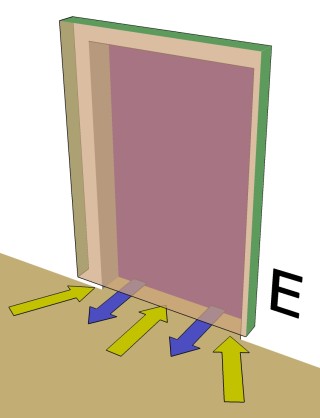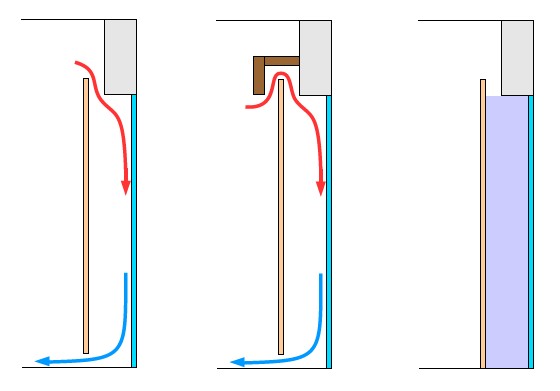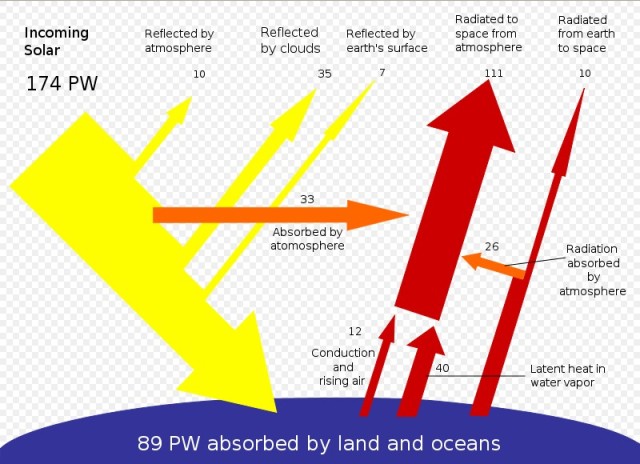It’s easy enough to find a derivation of the equation KE=½mv² but more difficult to find an explanation that doesn’t rely heavily on mathematics.
I want to show that when an object’s velocity (v) changes in a linear manner, like 0, 1, 2, 3, 4, 5, etc., then it’s kinetic energy (KE) will change like 0, 1, 4, 9, 16, 25, etc. The challenge is to come up with a quantitative answer but using easy to understand concepts and avoiding calculus.
1. Velocity=1
Start with two identical masses, m1 and m2, each with it own spring attached. The 2-mass system starts off with a velocity of zero, vs=0, and with the springs touching and held in compression, like in the diagram below. The total energy in the system is 0+1+1+0 being the KE of m1 plus the potential energy in each of the springs plus the KE of m2.
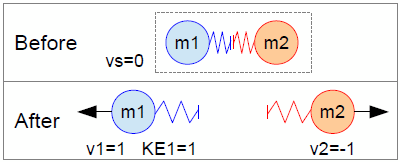
After the springs are released m1 shoots off to the left with velocity v1=1 and m2 heads in the opposite direction with velocity v2=-1. The potential energy in the springs has been changed into the kinetic energy of the objects so KE1=1 and KE2=1.
It doesn’t matter about units because whatever units are used (joules, kilograms, metres/second, etc.) the progression of velocities like 0, 1, 2, 3, 4, etc. should result in a progression of KE’s like 0, 1, 4, 9, 16, etc.
2. Velocity=2
Now, while m1 is travelling to the left with velocity v1=1, bring it into contact with another object, m3, and compress their springs like in the diagram below.
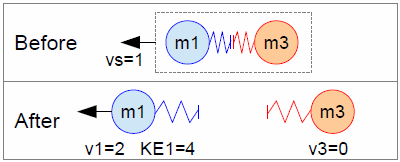
The trick is to consider the total energy in the system before the springs are released and then work out what is the energy in m1 after the springs have done their work.
Before the springs are released the energy of the system is 1+1+1+1=4 being the KE of m1 the potential energies of the springs and the KE of m3.
After the springs have been released m1 is heading to the left with velocity v2=2 and the velocity of m3 is v3=0. Because m3 is stationary it has no KE so all the system’s energy must be in the KE of m1. So KE1=4.
3. Velocity =3
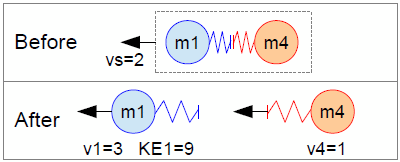
Now repeat the process outlined in the previous section. First look at the energy in the system before the springs are released. It’s 4+1+1+4=10. Then, after the springs have been released, subtract the KE of m4 from the total to find the KE of m1. KE1=9.
4. Velocity=4
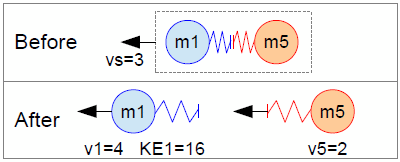
Energy in the system before the springs are released is 9+1+1+9=20. KE of m5 after the springs have been released is 4 so KE1=16.
In the same way:
For v1=5, KE1=16+1+1+16-9=25
For v1=6, KE1=25+1+1+25-16=36
It looks like kinetic energy is proportional to the square of velocity. Knowing how to derive this relationship without using calculus might not help with our day-to-day energy decisions except to show how a quantitative answer to a problem can sometimes be found by breaking the problem down to simple parts and basic principles.







